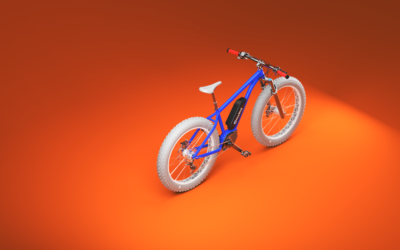Last time we checked in with Esben Oxholm, he shared how to set up Poliigon textures in KeyShot. That’s a great method when you need to use textures, but what if you have a simple white product on a white background? Or, what if the edges of your product are blending in with your background? Well, Esben shares his process for lighting an object to make it pop off the background without losing the color or detail of your product.
Rendering White on White
Creating a 3D rendering of a white product may seem simple, but if you look at any good white on white product shot closely, you’ll notice all the edges are visible against the background and the highlights are not blown out. So how is it done? There are three main steps:
1. Identify White Values from a Example Image
First, let’s get a better idea about how white products are lit. With an example of a white on white product, use the color picker in Photoshop (or other graphics software) to see just how white a product is in different areas. Some areas that seem white are only 90-95% white, while others may be much less. This should provide a basis for the values you want to achieve in KeyShot.
Takeaway: Add the highlight inside the object with darker values toward the edge.
2. Adjust the Material in KeyShot
In KeyShot, adjusts the base material color to match the overall white value you identified in the example photo, adjusting slightly for hue and saturation if needed.
Takeaway: Set up your base white value quickly, come back and adjust if needed.
3. Adjust the Lighting
Next, go to the Environment tab, add a new environment if needed, then select the HDRI Editor (KeyShot Pro). Here, boost the background color to be 100% white and starts adding pins for the highlights, using rectangular pins with falloff that span the object. At this point the environment background color and highlights can be adjusted to match the values of your example image.
Takeaway: Dial down your background color, then adjust the brightness of your highlights.
Want More?
Esben’s website is a treasure of tutorials and resources for learning more about KeyShot and product visualization. You can view tutorials he has produced and download KeyShot scenes at esbenoxholm.dk/diy/. While you’re at it, check out his Gumroad page as well and don’t forget to subscribe to his ‘Link Collection’ newsletter which contains additional resources.
Hands-on KeyShot Training
Interested in learning more about KeyShot? Contact us for information on our training that covers everything from KeyShot Basics to Advanced Workflow, Material Creation and more.







0 Comments